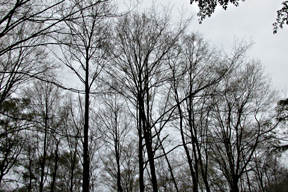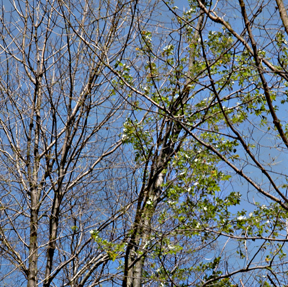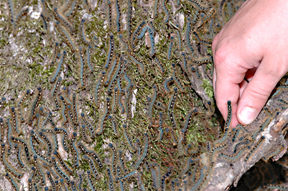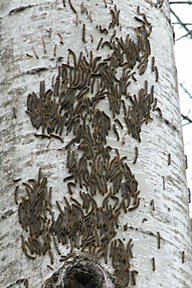


forest tent caterpillar
forest tent caterpillar
forest tent caterpillar
Approximately
70% of
the forest Lepidoptera that achieve periodic outbreak status deposit
their eggs
in batches and of these over half are social as larvae. It has been
suggested
that the ability of social species of caterpillars to undergo periodic
population explosions is due to enhanced predator defense,
thermoregulation,
and foraging efficiency. In
 |
 |
 |
| Forest stripped of leaves by the forest tent caterpillar |
Hardwood defoliated by the forest tent caterpillar |
Red maple (Acer rubrum) is
not eaten by the forest tent caterpillar |
During outbreaks, the biomass of caterpillars is enormous, greatly exceeding the collective biomass of all the other animals in the forest. Dr. Jens Roland, of the |
 |
 |
|
|

|
| This population of caterpillars
in this forest consumed all available foliage and, in a state of
near-starvation, searched frenetically for food. These
caterpillars are all on non-palatable plants and, as was the fate of
most of the caterpillars at the epicenter of this population,
eventually
starved to death or were consumed by disease. |
The state of hunger of a caterpillar
can be
determined by inspecting the gut. The caterpillar on the left
has a full foregut (light green) and midgut while that on the left has
an empty foregut and a partially filled midgut. |